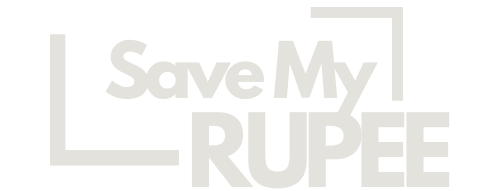Paying yourself as a business owner involves understanding the different methods available based on your business structure, financial goals, and tax considerations. Whether you run a sole proprietorship, LLC, or corporation, the right approach ensures you receive compensation while keeping your business financially stable.
In this article, you’ll explore various strategies to pay yourself.
These Are All Possible Methods to Pay Yourself as a Business Owner
- Salary
- Owner’s Draw
- Dividends and Distributions
- Combination of Salary and Draw
- Bonuses
- Payments as an Independent Contractor
- Retained Earnings
Salary
| Business Types | S-Corp, C-Corp, LLC taxed as a corporation |
|---|---|
| Taxation | W-2 income, payroll taxes deducted |
| Frequency | Weekly, biweekly, or monthly |
| IRS Requirements | Reasonable compensation rule applies |
| Pros | Stable income, tax-efficient, easier budgeting |
| Cons | Less flexibility, requires steady cash flow |

The salary method involves paying yourself a fixed amount regularly, similar to how employees receive a paycheck. This method is common for S-corporations, C-corporations, and LLCs taxed as corporations, where owners must adhere to the IRS’s “reasonable compensation” rule. This rule ensures that the salary aligns with industry standards for similar positions to avoid potential IRS audits.
For example, in the construction industry, a general contractor operating as an S-corp should earn a salary consistent with national averages. According to the U.S. Bureau of Labor Statistics, general contractors in the U.S. earn a median annual wage of around $95,260 in 2023. If your S-corp operates in this space, you should set your salary in this range to avoid IRS scrutiny.
Taxation
With the salary method, your income is treated as W-2 income, meaning payroll taxes such as Social Security and Medicare are automatically withheld. This makes tax management easier, as your taxes are deducted regularly. For S-corp owners, this approach can reduce self-employment tax liability, as additional profits distributed as dividends are not subject to these taxes.
Consider an S-corp owner who sets a salary of $70,000 per year. At this salary, Social Security tax is 6.2% (up to the wage base limit of $160,200 for 2023), while Medicare tax is 1.45% on all earnings. The owner will also be subject to federal income tax and state income tax (if applicable). By keeping the salary within a reasonable range, the owner ensures compliance while also leaving room for profit distributions.
Flexibility and Challenges
While the salary method provides stability, it requires consistent cash flow. If your business experiences seasonal fluctuations or unexpected expenses, meeting payroll obligations can be challenging. For example, retail businesses often face slower sales in certain months. In such cases, relying solely on a fixed salary might strain finances.
Owner’s Draw
| Business Types | Sole Proprietorship, Partnership, LLC (not taxed as a corporation) |
|---|---|
| Taxation | Income taxes paid at year-end or through estimated quarterly payments |
| Frequency | As needed, no fixed schedule |
| IRS Requirements | No fixed salary requirement, but must track draws accurately |
| Pros | High flexibility, easy to adjust based on business performance |
| Cons | Unpredictable income, requires careful tax planning |

The owner’s draw is a flexible way to pay yourself, allowing you to withdraw money from the business profits as needed. This method is commonly used by sole proprietorships, partnerships, and LLCs that are not taxed as corporations.
Unlike a fixed salary, an owner’s draw doesn’t follow a set schedule, giving you the flexibility to take more or less depending on your business’s cash flow and financial needs.
For example, according to data from the National Federation of Independent Business (NFIB), small business owners who use owner’s draws typically take anywhere between 20% to 50% of their business profits as personal income.
A sole proprietor running a small service-based business with annual profits of $100,000 might draw $30,000 to $50,000 throughout the year, depending on their living expenses and business needs.
Taxation
While owner’s draws offer flexibility, they also require careful tax planning. Unlike salaries, taxes aren’t withheld from your draws. You must estimate your tax obligations and make quarterly payments to cover income taxes, Social Security, and Medicare.
For self-employed individuals, the self-employment tax rate in 2023 is 15.3%, which covers both Social Security and Medicare contributions. Failure to set aside enough for taxes can lead to financial strain during tax season.
A freelance graphic designer operating as a sole proprietor might have fluctuating monthly income. During busy months, they might draw $5,000, while in slower periods, they might reduce this to $2,000. This flexibility helps manage varying cash flow, but it also means they must stay disciplined in saving for taxes. The IRS allows estimated quarterly payments, which are typically calculated based on expected annual income.
Budgeting Challenges
A major downside to using owner’s draws is the difficulty in maintaining consistent personal finances. Since the amount you take out depends on business performance, it can be hard to predict your income month-to-month. This unpredictability is common in industries like freelance work, seasonal businesses, and sole proprietorships with irregular sales cycles.
Additional Tips
- Separate Business and Personal Finances: Always maintain separate accounts for business and personal expenses. This helps track owner’s equity accurately and avoid IRS issues.
- Plan for Tax Payments: Save at least 30% of your draws for taxes. Automating transfers to a dedicated savings account can help ensure you have enough set aside for quarterly tax payments.
- Understand Your Owner’s Equity: Regularly review your business’s financial health by analyzing owner’s equity. Owner’s equity represents the net assets you own after liabilities are subtracted from total assets. If you overdraw and exceed your owner’s equity, you risk weakening your business’s financial stability.
Dividends and Distributions
| Business Types | C-Corp, S-Corp, LLC (taxed as a corporation) |
|---|---|
| Taxation | Income tax (lower rate on qualified dividends), no self-employment tax |
| Frequency | Periodic, typically quarterly or annually |
| IRS Requirements | Must be paid out of profits after all expenses |
| Pros | Lower tax rates, additional income beyond salary |
| Cons | Dependent on profits, not tax-deductible for the business |

Dividends and distributions are payments made to shareholders or owners from a business’s profits. While they are similar, dividends are typically associated with C-corporations, whereas distributions are more common in S-corporations and LLCs.
In 2023, qualified dividends (those held for more than 60 days within a 121-day period) are taxed at rates ranging from 0% to 20%, depending on your income bracket. For example, if your taxable income is less than $44,625 (single) or $89,250 (married filing jointly), you may pay 0% tax on qualified dividends. In contrast, higher-income earners pay up to 20%.
How It Works for C-Corporations?
C-corporations typically issue dividends to shareholders from post-tax profits. These dividends are subject to double taxation—first at the corporate level and then at the individual level when shareholders receive them.
For instance, if a corporation earns $500,000 in net profits and pays $100,000 in dividends, the corporation pays taxes on the entire $500,000, and shareholders pay taxes on the $100,000 received. Despite double taxation, dividends are a common way to reward shareholders while keeping salaries within IRS “reasonable compensation” limits.
S-Corporations and LLC Distributions?
For S-corporations and LLCs taxed as S-corps, owners receive distributions from the business’s profits. Unlike dividends, distributions aren’t subject to self-employment tax, making them an attractive option for reducing overall tax liability.
For instance, an S-corp owner might take a modest salary of $60,000 and then distribute an additional $40,000 in profits. The $60,000 is subject to payroll taxes, while the $40,000 distribution is only subject to income tax, not payroll taxes.
Frequency and Flexibility
Dividends are often paid quarterly, but some corporations pay them annually or semi-annually depending on profitability. Distributions in S-corps and LLCs are more flexible and can be adjusted based on business performance. However, it’s crucial to ensure that distributions don’t exceed retained earnings, as this can lead to compliance issues with the IRS.
Tax Efficiency and Planning
One of the biggest advantages of dividends and distributions is tax efficiency. For example, qualified dividends can be taxed at a lower rate than ordinary income. Additionally, by balancing salary and distributions, business owners can legally minimize payroll taxes.
According to IRS data, S-corp distributions averaged 41.5% of total compensation among small business owners in 2023, highlighting how common this strategy is for tax savings.
Let’s consider a small tech firm structured as an S-corp. The owner takes a salary of $80,000, meeting the IRS’s reasonable compensation guidelines for their industry and experience. On top of that, they receive $50,000 in distributions. The salary is subject to Social Security and Medicare taxes, but the distribution is only taxed as ordinary income. This structure allows the owner to legally reduce their overall tax burden while still drawing significant income from the business.
Combination of Salary and Draw
| Business Types | S-Corp, LLC taxed as a corporation |
|---|---|
| Taxation | Salary: W-2 income (payroll taxes deducted), Draw: taxed as distributions (no payroll taxes) |
| Frequency | Salary: Regular schedule, Draw: As needed |
| IRS Requirements | Salary must meet “reasonable compensation” rule |
| Pros | Optimizes tax savings, provides stability and flexibility |
| Cons | Complex to manage, requires careful tax planning |

Combining a salary with an owner’s draw is a strategic approach used primarily by S-corporation owners and LLCs taxed as corporations. This method allows you to take a regular salary while also drawing additional income from business profits, offering both stability and flexibility.
The key advantage lies in optimizing tax savings by balancing W-2 wages and distributions.
According to IRS guidelines, S-corp owners must pay themselves a “reasonable” salary before taking distributions. In 2023, many small business owners followed this strategy to reduce overall tax liability. For example, if an S-corp owner earns $150,000 annually, they might set a salary of $70,000 (which is subject to payroll taxes like Social Security and Medicare) and take an additional $80,000 as distributions. The $70,000 salary is taxed at regular rates with payroll deductions, while the $80,000 distribution avoids payroll taxes and is only subject to income tax.
Tax Benefits and Compliance
The main tax advantage of this combination is reducing the amount subject to self-employment taxes. The Social Security tax rate is 6.2%, up to the wage base limit of $160,200 for 2023. By setting a lower salary and taking the rest as distributions, S-corp owners can save significantly on these taxes.
However, to avoid IRS audits, the salary must meet the “reasonable compensation” standard, which varies by industry and experience level.
A marketing consultant operating as an S-corp with annual profits of $200,000 might allocate $90,000 as salary and $110,000 as distributions. The salary is taxed at normal income rates and is subject to payroll taxes. The remaining $110,000, taken as distributions, avoids the 15.3% self-employment tax, resulting in substantial savings.
Potential Challenges
While this method offers significant tax savings, it requires meticulous bookkeeping and tax planning. Mismanaging the balance between salary and distributions can lead to penalties.
For instance, setting an unreasonably low salary (e.g., $20,000 when industry standards suggest $70,000) can trigger IRS scrutiny and result in reclassification of distributions as wages, along with back taxes and penalties.
Bonuses
| Business Types | C-Corp, S-Corp, LLC taxed as a corporation |
|---|---|
| Taxation | Treated as ordinary income, subject to payroll taxes |
| Frequency | Typically annual, semi-annual, or quarterly |
| IRS Requirements | Must be reported as taxable income |
| Pros | Performance-based rewards, flexible timing |
| Cons | Subject to payroll taxes, less predictable income |

Bonuses are an additional form of compensation that business owners can use to reward themselves based on business performance. They are commonly used by C-corporations, S-corporations, and LLCs taxed as corporations. Bonuses are treated as ordinary income and are subject to payroll taxes, just like regular wages.
For example, a small retail business that had a strong holiday season might distribute year-end bonuses based on the extra profits generated. The bonuses can be flexible and timed to coincide with profitable quarters, making them an effective way to reward yourself without committing to a fixed increase in salary.
Taxation and Payroll
Bonuses are subject to the same payroll taxes as regular wages, including Social Security, Medicare, and federal income tax. For instance, if you receive a $10,000 bonus, it will be subject to the 6.2% Social Security tax (up to the wage base limit) and 1.45% Medicare tax, along with federal and state income taxes.
In most cases, employers withhold a flat rate of 22% for federal income tax on bonuses, according to IRS guidelines.
Consider a marketing agency structured as an S-corporation. The owner takes a regular salary of $80,000 and issues a $20,000 year-end bonus after the company exceeds its revenue targets. This bonus is subject to payroll taxes, making it similar to regular wages, but it allows the owner to reward themselves without permanently increasing the base salary.
Flexibility and Cash Flow Management
Bonuses offer flexibility because they aren’t fixed like salaries. They can be adjusted based on the business’s cash flow and profitability. This makes them particularly useful for businesses with seasonal revenue.
For example, a landscaping business might issue bonuses after the busy summer season when profits are highest, allowing the owner to take home extra income without increasing the fixed cost of salary.
In industries like finance and real estate, where revenue can be heavily performance-driven, bonuses are often tied directly to hitting specific financial targets. For instance, real estate brokers may take bonuses based on commissions from high-value property sales.
Payments as an Independent Contractor
| Business Types | Partnerships, LLCs (with partners), S-Corp (for additional services outside regular role) |
|---|---|
| Taxation | Self-employment tax (15.3%), income tax (subject to 1099 reporting) |
| Frequency | As per contractual agreement, project-based or periodic payments |
| IRS Requirements | Must report income as independent contractor earnings (1099-MISC or 1099-NEC) |
| Pros | Flexibility in payment terms, potential for higher rates for specialized services |
| Cons | Higher tax liability (self-employment tax), irregular income |
In certain scenarios, business owners, particularly those in partnerships or LLCs, can choose to pay themselves as independent contractors if they provide services beyond their regular role. This approach allows owners to take on specific tasks or projects and get compensated separately from their ownership stake.
According to IRS guidelines, independent contractors must report their earnings on Form 1099-NEC if they earn more than $600 annually from a single payer. In 2023, independent contractors faced a self-employment tax rate of 15.3% (12.4% for Social Security and 2.9% for Medicare) in addition to regular income tax.
How It Works?
This method is particularly useful in partnerships or multi-member LLCs where partners have specialized skills. For instance, if a partner in a marketing agency also provides specialized IT services, they can be paid as an independent contractor. The earnings from these services would be treated separately from their share of business profits, allowing them to charge market rates for their work.
Tax Implications and Compliance
When paid as an independent contractor, you are responsible for paying both the employee and employer portions of Social Security and Medicare taxes. Additionally, since taxes aren’t withheld, contractors must make estimated tax payments quarterly.
A common mistake is underestimating these payments, which can lead to penalties and interest at year-end. According to the IRS, contractors should generally set aside around 30% of their earnings to cover tax obligations, depending on their total income bracket.
Let’s say that a law firm is structured as an LLC with three partners. One partner, who is also a certified public accountant (CPA), provides additional accounting services to the firm. Instead of distributing profits, the firm may contract this partner as an independent contractor and pay them directly for these services. This allows the CPA partner to charge a higher hourly rate, similar to outside consultants, while keeping this income separate from regular partnership distributions.
Retained Earnings
| Business Types | C-Corp, S-Corp, LLC, Partnerships |
|---|---|
| Taxation | Profits are taxed, but earnings remain in the business |
| Frequency | Ongoing, typically reviewed annually or quarterly |
| IRS Requirements | Must be reported on financial statements and tax returns |
| Pros | Improves business stability, funds growth initiatives |
| Cons | Delays personal income, potential tax inefficiency |

Retained earnings represent the portion of a business’s profits that are kept within the company instead of being distributed to owners or shareholders. These funds are reinvested into the business for growth, debt repayment, or as a buffer for future expenses.
Retained earnings are a long-term strategy aimed at strengthening the company’s financial foundation and ensuring it has enough capital to sustain operations and expand.
According to financial reports, many small businesses typically reinvest 10% to 30% of their profits as retained earnings, depending on growth strategies and cash flow needs. For example, a manufacturing firm with annual profits of $500,000 might decide to retain $150,000 to upgrade equipment and expand operations, leaving the remaining $350,000 available for dividends or distributions.
Taxes
Although retained earnings are not directly taxed again when reinvested, the business’s profits are taxed before any earnings are retained. For C-corporations, this could mean facing corporate tax rates on the profits, which are then set aside as retained earnings.
S-corporations and LLCs, where profits pass through to owners, handle retained earnings similarly but without corporate taxes. However, owners may still face personal income taxes on distributed profits.
Let’s say a tech startup made $1 million in profit this year. Instead of distributing all profits to shareholders, the company retains $600,000 to fund R&D, hire new talent, and invest in marketing. These retained earnings boost the company’s value and allow for organic growth without relying on external funding. Retained earnings are reflected on the company’s balance sheet under shareholders’ equity, showing the accumulated value of all undistributed profits.
Flexibility and Growth
Retaining earnings provides the flexibility to reinvest directly into the business. Businesses with significant retained earnings can fund expansions, enter new markets, or weather economic downturns without taking on additional debt.
For example, during the COVID-19 pandemic, companies with strong retained earnings were able to maintain operations, cover payroll, and adapt to market changes without the need for emergency loans.
FAQs
How much should I pay myself as a business owner?
Determining how much to pay yourself as a business owner depends on several factors, including your business’s profitability, industry standards, and your personal financial needs. A common guideline is to base your compensation on your business’s average monthly profits while ensuring you have enough to cover taxes, expenses, and savings. For S-corporations, the IRS requires that you take a “reasonable” salary based on industry norms, while sole proprietors often rely on owner’s draws to cover personal expenses.
Do I have to pay myself if my business isn’t making money?
If your business isn’t generating profits yet, you are not required to pay yourself. In such cases, many business owners choose to reinvest earnings into the business rather than taking a salary or draw. However, if you’re operating as an S-corp or C-corp, the IRS may still expect you to take a reasonable salary if you’re actively working in the business, even during low-profit periods. It’s essential to balance your compensation with your business’s cash flow and growth needs.
Can I take a salary and dividends from my S-corp?
Yes, as an S-corp owner, you can take both a salary and dividends (distributions). Your salary is subject to payroll taxes, while dividends are only subject to income tax. However, the IRS mandates that your salary must be “reasonable” compared to industry standards. After paying yourself a reasonable salary, you can distribute the remaining profits as dividends, which are more tax-efficient since they avoid payroll taxes.
What happens if I take too much as an owner’s draw?
Taking too much as an owner’s draw can strain your business’s cash flow and limit funds available for growth, debt repayment, and operating expenses. Additionally, excessive draws that exceed your equity stake can result in negative equity, putting your business at financial risk. It’s crucial to monitor your business’s financial health regularly and avoid overextending your draws, especially if your business has variable income or relies on retained earnings for stability.
Do I need to pay myself a regular salary if I’m a sole proprietor?
No, as a sole proprietor, you are not required to take a regular salary. Instead, you pay yourself through owner’s draws, which can be taken as needed. Unlike a salary, these draws don’t have to follow a fixed schedule, offering more flexibility. However, it’s important to manage your cash flow carefully and ensure you’re setting aside enough for taxes since there’s no automatic payroll deduction.
How often should I pay myself as a business owner?
The frequency of paying yourself depends on your business structure and financial strategy. If you’re on a salary, you typically pay yourself weekly, biweekly, or monthly. For owner’s draws, there’s more flexibility; you can take money as needed, whether it’s weekly, monthly, or irregularly. It’s best to align your payment schedule with your business’s cash flow patterns and your personal budgeting needs. Keep in mind that consistent payments, even for draws, can help with tax planning and financial stability.
Last Words
Choosing how to pay yourself as a business owner is a critical decision that directly impacts your financial well-being and your company’s stability. The best method depends on your business structure, financial goals, and tax considerations. From the stability of a salary to the flexibility of an owner’s draw, each option has its advantages and challenges.
Combining these methods, leveraging bonuses, or even using retained earnings can optimize both your personal income and business growth.

